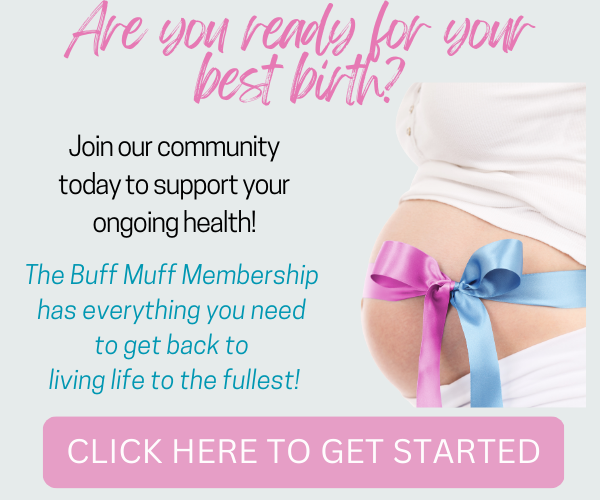
Performing Kegels Exercise for Pregnancy | The Vagina Coach
Jul 22, 2020
I get a lot of questions from women who are expecting and who are interested in finding out the benefits of performing kegels exercises during pregnancy. Having questions is natural, and I’m so grateful for my education as a trainer to be able to educate my clients about doing kegel exercises during pregnancy and to be able to address their concerns.
They worry about if it’s safe to keep doing their kegels now that they are pregnant or if pregnancy is a time that they should start doing them if they haven’t been doing them before. They wonder how to do kegels and when they should start doing them if they are pregnant if there is an ideal time...
As a Core Confidence founder, women come to me with a lot of questions about pelvic wellness at all stages of life, prenatal, postnatal or even if they never plan to have a child. Kegels are foundational to pelvic wellness and a hot topic of conversation in the media among pelvic wellness practitioners and pelvic floor physiotherapists.
Today we're going to be talking about just that: kegels exercise for pregnancy. I will answer the burning questions you have about this important part of prenatal pelvic wellness so you can set yourself up for the best birth, recovery and pregnancy possible.
Are Kegels safe during pregnancy?
One of the main questions I get about kegel exercises for pregnancy is, “Should you do them or shouldn't you do them?” It’s understandable to wonder that there are a lot of things that you shouldn’t do in pregnancy, and it’s a good idea to ask about whether a given activity is safe to start or continue during pregnancy.
After so many years of supporting women in their pelvic wellness, my answer is yes, you should do kegels during pregnancy. I would also say that it’s not only safe, but it’s also really an important thing to prioritize. It’s important to do kegels during pregnancy to help you train for birth and to set you on the road to success for a healthy postpartum.
But there is a caveat there that we need to talk about so that you do them the right way. Spoiler: the way you do them during pregnancy will be a little bit different than you’re used to doing them when you aren’t pregnant. Don’t worry; I’m going to explain everything so you know exactly what to do, what not to do and why it matters.
How Do You Do Kegels When You Are Pregnant?
One of the important pieces to understand is that In pregnancy, what’s happening anatomically is that our uterus is growing up and then out in front of us. From a mechanical perspective, that shifts the center of gravity, which we try to accommodate with different positioning of our pelvis. We need pelvic floor muscles that can respond to those changes, and kegels are important for developing that level of responsiveness.
We also have an ever-increasing load on the pelvic floor as the baby grows bigger and bigger inside you. That’s why we want to have pelvic floor muscles that are strong. We need to have pelvic floor muscles that can withstand that ever-increasing load.
We also want pelvic floor muscles that are supple and that can release tension. We want them to be able to find ease, surrender and relax as well. We don’t want those muscles to be too tight, and so we need to be sure to account for that in our exercises.
That need for strong, and supple muscles is why kegels in pregnancy are so important for pregnant women to do. Kegel exercise for pregnancy will help keep those muscles strong and able to withstand all of those changes that are happening with a growing baby and shifting demands on your pelvic floor.
How Can Kegels Improve My Birth Experience?
Those pelvic floor muscles also play a role in birth. As the baby is descending into the pelvis, when their head reaches the pelvic floor, there needs to be a little bit of tone in those muscles. That level of tone helps guide the baby into those rotations, the movements, the cardinal movements of birth. Toned pelvic floor muscles facilitate the magical internal dance of birth.
We want to make sure through doing these exercises conscientiously that the pelvic floor can also respond by opening. That’s crucial because, at the end of the day, we need this space to be able to open freely so the baby can pass through.
We need to have responsive pelvic floor muscles so that there's not as much tension in the pelvic floor, creating resistance for the baby. Doing kegels helps your pelvic floor muscles usher your new baby into the world with more ease.
Stages of Labour and Your Pelvic Floor
In early labour, we want to create more space in the pelvic inlet, and you can do that by sitting in a tucked position. Tucking the tailbone under can create a little bit more space by flattening out the back and bringing that tailbone underneath.
Later on in labour, the demands on your body will change. When it comes time to push in the second stage of labour, we need that tailbone to get out of the way. Tucked or fixed positions, such as lying on the back or even a semi-reclined position on the bed, can lock that joint and restrict movement. You definitely
If we want as much space here in the outlet as possible, then we want to find birth positions where we can actually allow that tailbone to respond as the baby is moving out by getting out of the way. We also need pelvic floor muscles that can respond by lengthening and relaxing, and opening.
How do I do Kegels while pregnant?
Doing kegels during pregnancy keeps that group of muscles strong. In the final weeks, I have my clients modify that a little bit to be more like birth prep kegels. If you've watched my core breath video, you will know I teach an inhalation to expand and by expanding, I mean expanding in the ribs, expanding in the belly and expanding in the pelvic floor.
On the exhale, we think about the edges of those pelvic floor muscles coming together and then lifting up into the body. That's the exhalation. Then the inhalation is that blossom and that opening and expansion. In the last few weeks of pregnancy, my clients practice inhaling to expand, allowing the edges of that diamond to really reach to blossom.
When they exhale, they're going to practice keeping that expansion. Instead of drawing the edges together, they're going to keep the edges open. So it's an inhale to expand. Then it's an exhale to keep that expansion.
That's what we have to do when we're pushing our baby out, we are exhaling, but we don't want to be drawing those edges together while we do. We want to be able to open and surrender and relax.
When should I start Kegels during pregnancy?
Kegels can be done safely throughout pregnancy, but the more we can practice inhaling and then exhaling while keeping that space open in those last weeks of pregnancy, the more likely it is that that will translate to our pelvic floor muscles being able to respond appropriately in labour as well.
Kegels are very important in pregnancy. We want to have strong pelvic floor muscles. We also want to have supple muscles that can lengthen, that can surrender, and that can release tension. A balanced training program in your pregnancy is key to achieving these objectives and improving your birth experience.
For that reason, when women ask me, “Should I do kegels in pregnancy?” My answer is always, “ Yes, you should do them, but make sure you do them with the modification that I recommend for pregnant women specifically.” I want to see more women feeling strong and confident for birth and ready to take on life’s challenges armed with the information they need to do so.
Birth is a natural process, but you still need to get your body prepared for it, and kegels are helpful for getting your pelvic floor as prepared as possible for the big day! My Buff Muff Prenatal Program takes the principle of specificity and applies it to pregnancy fitness. You will learn how to do kegels, combine them with exercise that trains your body for birth and mimics the most effective birth positions, AND you will incorporate functional fitness that prepares you for all the lifting, pushing, pulling, rotating and squatting you will do in motherhood.
Programs:
Buff Muff Prenatal Program
You've heard that giving birth is like a marathon, right? It is actually more like 5-6 marathons! Birth is a very physically and emotionally demanding event, and as we would train for a marathon…we need to train for birth! The Buff Muff Prenatal Program teaches you the basics and gives you access to pregnancy fitness workouts and a postpartum recovery protocol.




